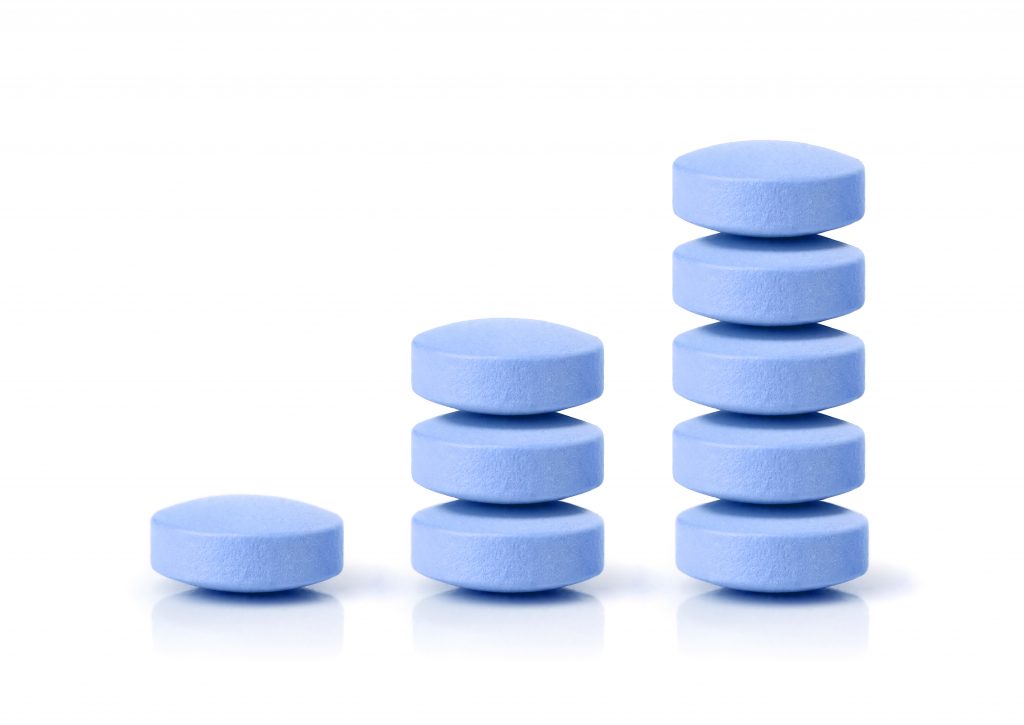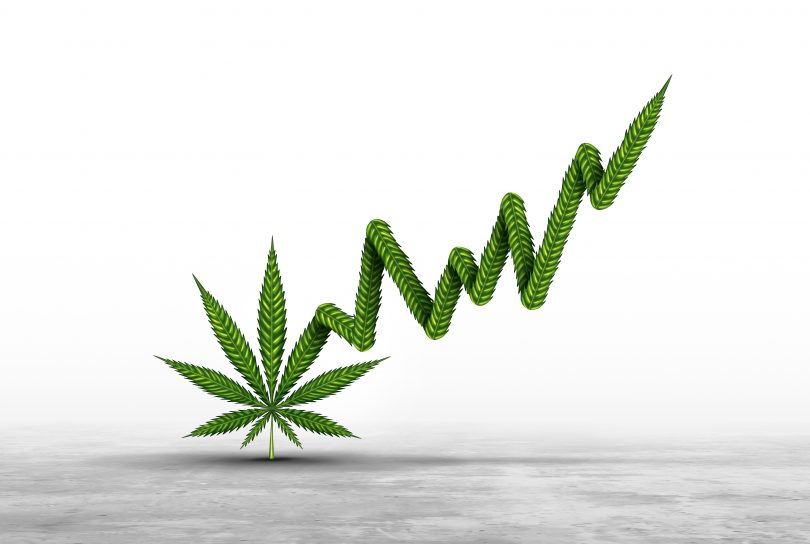For some drugs, building tolerance can mean a higher possibility of overdosing, for some drugs, it simply means the user can no longer get an effect at all. When it comes to cannabis tolerance, what does it really mean, how will it affect the user, and how to avoid it.
Cannabis tolerance is a bummer, but you can avoid it by taking a few days off, or waiting longer intervals between smoke sessions. This goes for both delta-9 THC and delta-8 THC. Delta-8 is a newer alternative to delta-9, which produces slightly less psychoactive effect, while providing a clear-headed high, and less couch locking and anxiety, which are often experienced by delta-9 users. Sound good? Check out our selection of delta-8 THC deals, and just remember to keep your tolerance down!
Tolerance
According to the site cancer.gov, tolerance indicates “A condition that occurs when the body gets used to a medicine so that either more medicine is needed or different medicine is needed.” It’s actually a pretty basic concept, and it doesn’t just apply to substances. A person who has undergone a lot of pain, can build a tolerance to further pain. A person who gains a suntan, creates a stronger tolerance to burning from the sun. It happens all the time that patients receiving medication for things like cancer, MRSA, HIV or epilepsy, have to continually switch medications when their bodies develop too much resistance to a specific medication.
In fact, medication resistant epilepsy was one of the main reasons that cannabis started to become big medically. And think of the whole disease-resistant bacteria problem, like MRSA, and antibiotic-resistance in general. In this context, it can either be a person’s body no longer responding to a medication, or, that so much of a population has been continually exposed to something (like antibiotics), that a tolerance occurs across a larger population.
Since the use of substances has skyrocketed in general, with nearly everyone swallowing down prescription pills, supplements, and illicit drugs, the idea of tolerance has become more well-known. Tolerance necessitates either a larger dose to get the same effect of something, or the necessity of using something else completely. Now think of opiates, and the huge overdose rate that occurs with them. In smaller doses these drugs are less dangerous, because the body can handle the sedative effect on the autonomic nervous system.
NEW: THC-O Products
More potent than Delta-9, slightly psychedelic and hemp-derived, THC-O might be the solution for tolerance.
The dangers of tolerance
If a person no longer feels high on a depressant drug, and starts taking higher doses to keep getting to the same high, or mixes drugs to obtain a stronger high, at a certain point the CNS depressant effect will be too much for the body to handle. The idea of getting high, and being able to breathe – for example – are two very different things. The body can only handle so much depressive effect before the autonomic nervous system will be overridden. The autonomic nervous system refers to the involuntary part of the nervous system that regulates things like heartrate, blood pressure, and the rate of breathing.
With the right amount of tolerance, the amount a person needs to feel the ‘high’ effects, will be far past what the autonomic nervous system can handle in order to maintain functions like breathing. The majority of overdoses happen because the amount taken to get high (or obtain other effects), is too much for the autonomic nervous system.
This can be due to one drug being used, or when multiple drugs are used, with their combined effect being more than the body can handle. This is the same with depressants and stimulants. A person might build a tolerance to cocaine which necessitates taking more to feel high, but at a certain point, the heart will not be able to withstand the stimulant effect. If enough is taken as a result of trying to get around this tolerance, the heart could simply stop working properly under the stress.

What does tolerance mean for the body?
In order to understand cannabis tolerance, and how to avoid it, it helps to know what is being avoided. It’s great to throw a word like ‘tolerance’ around, and its basic meaning is understood by most, even if the functional understanding of how it happens is not. Sure, we know that the body essentially acclimates to the substance, thereby not responding to it in the same way, but what does this mean?
In terms of pharmacodynamics (how a drug effects the body), tolerance occurs at the cellular level, when a substance is repeatedly used, leading to less response by the cell. Most of the time this is from a large amount of a substance consistently binding to the same receptor until the receptor becomes desensitized to the drug. Another form of pharmacodynamic tolerance is when the number of receptors is reduced, which means a change in firing rate and action potential.
Drug tolerance happens in another way as well, pharmacokinetic tolerance, which explains how the body effects the drug. Pharmacokinetics deals with how the drug is treated by the body through absorption, distribution, metabolism, and excretion. This kind of tolerance refers to the decreased amount of the drug that’s capable of reaching reactor sites. This is often caused by increased enzyme action to break down the drug before it can do what its supposed to.
How does cannabis tolerance work?
Now that we know the basics of tolerance, how does cannabis tolerance work, and what can be done to avoid acclimation to the drug’s effects?
This was investigated in 2016 with the study Rapid Changes in CB1 Receptor Availability in Cannabis Dependent Males after Abstinence from Cannabis. The study investigated how THC works within the brain, and it was found that heavier cannabis users had decreased CB1 receptor availability in most parts of the brain. The study group was split in two, with half not smoking for two days, and half not smoking for 28 days. The availability of receptors actually increased after only two days, and continued to increase for more than four weeks.
The smoking group still did not have the same CB1 availability as the control group, which didn’t smoke at all, after four weeks. However, all indications point to it returning to normal within time. The study only covered the results at the four-week mark. This study highlights the decreased availability of CB1 receptor reaction, meaning it’s a pharmacodynamic tolerance, whereby activity at the receptor is decreased.

Does cannabis cause a pharmacokinetic tolerance? This form of tolerance, also called dispositional tolerance, it quite possible for cannabis as well. This would mean that the drug is treated differently by the body over time. Some evidence of this has been seen – particularly for heavy users – in tolerance to the CNS depressant effects, hypotherma hypopnes, and EEG effects. One example, is the blocking of THC effects by hepatic microsomal enzyme inhibitor SKF-525-A. This means the body itself is responding to the drug in the system, and not allowing it to have the same effect.
What about CBD & terpenes?
It’s said a lot that CBD does not cause tolerance, with many people online quoting a 2011 study that makes this point. However, this never made sense, and really, it’s been known for as long as cannabis medicine has been used in modern times. That’s because, Dr. William O’Shaughnessy figured it out back in the 1800’s, when using hemp oil to treat a 40-day old child with extreme epilepsy. One of the big points made, was that the dose had to be increased to get the same effects, even over just a few days of time. It’s all detailed very clearly here.
Of course, even when bad information gets repeated often, it can still be corrected. This study: Cannabidiol Tolerance in Children and Adults With Treatment-resistant Epilepsy was put out in 2021, and gives a better view of the subject. The study lasted three years and looked at tolerance among 92 treatment-resistant epileptic patients. In this study, tolerance was defined as either the need to increase dosage because of reduced efficacy by at least 30%, or with a 30% or more increase in symptoms with at least three months treatment, and no increase in medication.
Tolerance to the CBD was found in 25% of the population, starting at approximately 7.3 months, with 31% discontinuing treatment due to tolerance issues or adverse effects. While the study investigators claim, “We report for the first time the plausible appearance of tolerance to cannabidiol-enriched oil”, this is only partially true, as O’Shaughnessy made the same discovery, about 150 years ago, using hemp oil.
Of course, when it comes to tolerance to compounds like terpenes, your guess is as good as mine, because there just isn’t any research out there. Terpenes in general are not known to bind to cannabis receptors, however, beta-caryophyllene does, and others might as well. Plus, we know that action at the receptor site isn’t the only way to gain tolerance, and that a pharmacokinetic tolerance is possible as well. Unfortunately, if they produce tolerance, the information has not been defined.
Cannabis tolerance and how to avoid it
The main way of avoiding tolerance, or lessening it when it happens, is simply to take a break. This goes for THC and CBD, and if there is tolerance to terpenes, would likely be an answer there as well. Remember that in the THC study, it was found that after just two days receptors were becoming more active again. It’s hard to say exactly which effects a specific human will build tolerance too, and with each one, how long it might take to decrease it. It also, from the CBD study, seems to vary greatly between people.
NEW: Delta 8 + THCV Products
There are, after all, hundreds of cannabinoids and terpenes, and the research is only starting into this, and mainly just with THC and CBD. A good rule of thumb these days, is if you find yourself not feeling all the effects, take a few days off, let your tolerance lower. Or simply smoke less, so that not as much tolerance is built up. And if you require the drug for medical reasons, and in high dosages, consult with your physician on the best way to handle it. Perhaps, taking a break is still the best answer, perhaps its all about upping a dose if necessary.
Conclusion
Even without research studies, its not hard to conclude that THC causes tolerance, and that it goes down quickly. I’ve never been a part of a study, yet I smoke weed, so I know this because it’s actually quite obvious. But that relates mainly to a high, and exactly what other effects decrease from too much use, I cannot say, nor can I say how long to get them back. What I do know, is that cannabis tolerance isn’t hard to avoid or fix, and generally relates to how heavily we use it.
As more research comes out, there will be more information on how better to deal with cannabis tolerance. For now, just know that if you’re not feeling what you should be, you probably just need a few days off.
Hi and welcome to CBDtesters.co, your best location for the most interesting and relevant cannabis-related news from around the globe. Check the site out daily to stay on top of the fascinating world of legal marijuana, and sign up to get our newsletter, so you never miss a story.
Disclaimer: Hi, I’m a researcher and writer. I’m not a doctor, lawyer, or businessperson. All information in my articles is sourced and referenced, and all opinions stated are mine. I am not giving anyone advise, and though I am more than happy to discuss topics, should someone have a further question or concern, they should seek guidance from a relevant professional.









